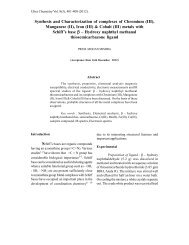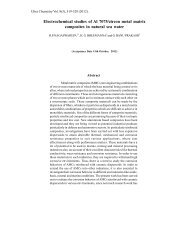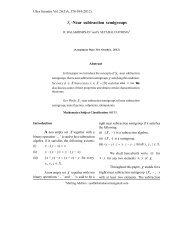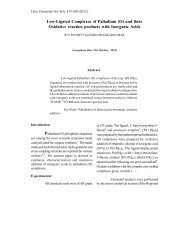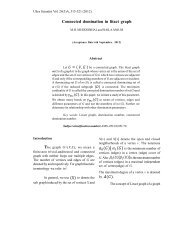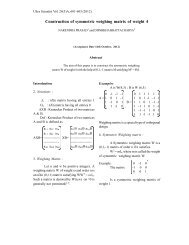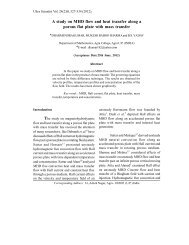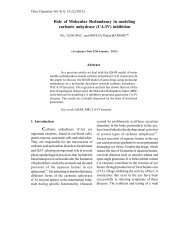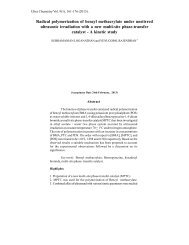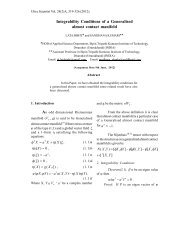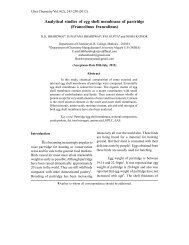Decomposition of curvature tensor field in a ... - Ultrascientist.org
Decomposition of curvature tensor field in a ... - Ultrascientist.org
Decomposition of curvature tensor field in a ... - Ultrascientist.org
You also want an ePaper? Increase the reach of your titles
YUMPU automatically turns print PDFs into web optimized ePapers that Google loves.
K. S. Rawat, et al. 425<br />
The Riemannian <strong>curvature</strong> <strong>tensor</strong> <strong>field</strong><br />
is def<strong>in</strong>ed as<br />
=<br />
, (1.3)<br />
where and denotes the<br />
real local coord<strong>in</strong>ates.<br />
The Ricci <strong>tensor</strong> and the Scalar <strong>curvature</strong> are<br />
given by<br />
and R = respectively.<br />
It is well known that these <strong>tensor</strong>s satisfies<br />
the follow<strong>in</strong>g identities<br />
and<br />
The Bianchi identities <strong>in</strong><br />
and<br />
(1.4)<br />
(1.5)<br />
, (1.6)<br />
. (1.7)<br />
are given by<br />
(1.8)<br />
(1.9)<br />
The commutative formulae for the <strong>curvature</strong><br />
<strong>tensor</strong> <strong>field</strong>s are given as follows<br />
and<br />
, (1.10)<br />
. (1.11)<br />
A Tachibana space is said to be Tachibana<br />
recurrent space 3 , if the <strong>curvature</strong> <strong>tensor</strong> <strong>field</strong><br />
satisfies the condition<br />
where<br />
, (1.12)<br />
is anon-zero vector and is known as<br />
recurrence vector <strong>field</strong>.<br />
The space is said to be Ricci-recurrent<br />
space, if it satisfies the condition<br />
, (1.13)<br />
Multiply<strong>in</strong>g the above equation (1.13) by ,<br />
we have<br />
R.<br />
(1.14)<br />
2. <strong>Decomposition</strong> <strong>of</strong> Curvature Tensor<br />
Field :<br />
We consider the decomposition <strong>of</strong><br />
<strong>curvature</strong> <strong>tensor</strong> <strong>field</strong><br />
form<br />
where two vectors<br />
are such that<br />
<strong>in</strong> the follow<strong>in</strong>g<br />
(2.1)<br />
and a <strong>tensor</strong> <strong>field</strong><br />
. (2.2)<br />
Now, we have the follow<strong>in</strong>g:<br />
Theorem (2.1): Under the decomposition<br />
(2.1), the Bianchi identities for takes the<br />
forms,<br />
and<br />
(2.3)<br />
. (2.4)<br />
Pro<strong>of</strong>. From (1.8) and (2.1), we get<br />
(2.5)<br />
Multiply<strong>in</strong>g (2.5) by h and us<strong>in</strong>g (2.2), we get<br />
the required result (2.3).<br />
Aga<strong>in</strong>, us<strong>in</strong>g (1.9), (1.12) and (2.1), we have



